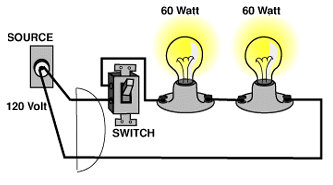As the story – often attributed to young Einstein – goes, a professor challenged his students with this question: "Did God create everything that exists?" A student bravely replied, "Yes, He did". “God created everything?” the professor asked. “Yes sir,” the student replied. The professor responded, "If God created everything, then He created evil, since evil exists. Evil is what evil does, and so God must be evil.” The student couldn't respond to that reasoning. The professor was quite pleased with himself and boasted to the students that he had proven once more that the notion of ‘God is good’ is a fallacy.
Another student raised his hand and asked the professor, "May I pose a question?" "Of course," replied the professor. The young student stood up and asked: "Professor, does cold exist?" The professor answered, "What kind of question is that? Of course, cold exists. Haven't you ever been cold?" The young man responded, "In fact sir, cold does not exist. According to the laws of physics, what we consider cold, in fact, is the absence of heat. Any object can be studied as it exchanges energy as heat. Absolute zero temperature which is unreachable is the total absence of heat, but cold does not exist. What we have done is create a term to describe how we feel if we have no heat."

The student continued, “Professor, does darkness exist?” "Of course it does” answered the professor. This time the student responded, "Again you are wrong, sir. Darkness does not exist, either. Darkness is in fact simply the absence of light. Light can be studied, darkness cannot. Darkness cannot be broken down into its constituents, as light can. A simple ray of light can break into a world of darkness and illuminate it. Dark is a term that we humans have created to describe what happens when there is no light present."
Finally, the student asked the professor, "Sir, does evil exist?" The professor replied, "Of course it exists, as I mentioned at the beginning. We see it every day. There is a multitude of crimes and violence everywhere in the world, and those things are evil." To this the student responded, "Sir, evil does not exist. Just as in the previous cases, evil is a term which man has created to describe the outcome of the absence of good. Evil is not like faith, mercy or love that exist just as does heat and light. Evil is the manifestation of what happens when man does not have mercy and love present in his heart. It’s like the cold that comes when there is no heat or the darkness that sets in when there is no light.”
The story makes the point that granting existence to absence is a misconception. A more common misconception is to grant one of the constituents of something the causal power of that thing. This delusion is based on the false logic that if something disappears when one of its constituents disappears, then that constituent must qualify as the causal agent of that thing.
The occurrence of something is contingent upon the presence of all contributing factors that together constitute a complete causal mechanism or chain. The absence of one of those factors is sufficient cause for the non-occurrence of that thing. That is, for something to occur, the entire set of the necessary factors must occur conjointly and make their contributions. That thing will not occur if one of the necessary factors is disabled or absent. Failure to make this subtle distinction is a common cause of blunt misjudgments, especially when all the contributing factors in the causal chain (other than one) are always present. This paints a false picture of one-to-one correspondence between ‘occurrence/non-occurrence of something’ and the ‘factor’ being present/absent. As a consequence, that factor is mistakenly viewed as a powerful causal agent.

The lighting of a lamp in a room, for example, is dependent on the presence of a light bulb in the lamp, the light switch being turned on, the electric wiring through the grid being intact, and the power plant generating electricity. That is, for the lamp to give light, all the necessary components that constitute the causal mechanism must be in place. Removing or disabling one of those components, such as turning the light switch off, is sufficient to halt the entire mechanism and cause the lamp to go out. In this simple case, we all know that the light switch is simply one of many passive links in the chain of causal mechanism, and we do not identify the light switch as an agency with causal power. Besides, a light switch is never observed to produce electricity or light and it is inherently incapable of doing so.

Likewise, a slew of dynamics such as sunlight, water, nutrients, temperature, etc. must be in place for a tomato plant to grow and bear tomato fruits. Watering is a necessary condition for the plant to eventually bear tomatoes, and failing to water the plant for several days may cause the plant to die. But this does not mean that watering alone is the sufficient condition for the making of tomatoes, and that it is the water which deserves all the credit for the formation of the tomatoes. Also, a person cannot live more than a few minutes if his or her lungs stop functioning; yet all the vital organs need to be working properly for the person to continue living. The absence of functioning lungs is a sufficient cause for the absence of life, but the presence of functioning lungs is one of many necessary conditions for the presence of life.
When some of the links in the causality chain as well as the outcomes are nonphysical, such as the mind, consciousness, free will, the sense of sight, and the emotions, we do just that without questioning – like ascribing supernatural causal powers to the brain which is a lump of inept fatty meat. Superficial explanations such as ‘vision was lost when a certain part of the brain was damaged, and the sense of vision was restored when that part was repaired; and this shows that that part of the brain is responsible for the creation of vision’ abound. But this is no different than saying ‘the light of the lamp was gone when the light switch was damaged, and lighting was restored when the switch was repaired; and this shows that the light switch is responsible for the generation of light.’ Of course, both statements remain equally as pure speculations, not scientific facts, until a light switch which generates light, and an artificial brain which constructs vision, mind, consciousness, etc. are built.
A damaged or turned-off switch is sufficient to cause the absence of light, but a complete causal mechanism with all constituents turned on is necessary to cause the presence of light. It is a deep delusion to put presence and absence on equal footing. The notion that a constituent factor is a causal agent on the basis of the observation of something disappearing when the factor is absent and reappearing when the factor is present is a blunt deception.

This delusion of crediting one of the links of the causal chain for the outcome or effect is so deeply entrenched in our minds that we view the link as the source of the effect. For example, we ordinarily think that the source of the pleasure of eating an apple is the apple itself, since, when there is no apple, there is no pleasure of eating an apple. But this is a delusion, and dreams are sufficient to burst this bubble of deep-rooted notion. The virtual apple that we eat in our dreams with our eyes and mouth closed is as pleasurable as the physical one. We are so conditioned to concurrently having perceptions and experiences of the material world that we have developed this deeply entrenched notion that the physical realm is the source of everything we experience – such as the taste being embedded throughout the food as virtual miniscule particles. In reality, the sense of taste emerges out of nowhere when certain chemicals in the food that we eat react with the thousands of taste receptor cells in the mouth. This phenomenon is a common delusion called habituation, which describes the mental blindness and conditioning that occur after countless experiences of two things always occurring together.
Finally, a casual observer will easily deduce (based on observations) that corporeal things which consist of tangible material bodies are characteristically passive, recessive, submissive, affected, subjugated, controlled, and governed by external influencers. In contrast, the active, dominant, forceful, effective, subjugating, controlling, and governing things are intangible and nonphysical, and they are not made of matter. All material things such as air, water, soil, stones, bricks, tools, etc. do not initiate anything of their own; but rather, they are fully controlled by the set of immaterial laws and forces of physics which qualifies as an agency.
Therefore, it is no surprise that all entities that qualify as active agents with causal power are of nonphysical nature, with no limitations of space and time, ruling over the bodies of physical entities made of matter-energy. This is also the logical basis for the postulation of the immaterial agency of life which governs the corporeal bodies of living beings built of atoms and molecules. Physical but immaterial ethereal things such as light, radio waves, and other electromagnetic signals appear to share some aspects of nonphysical things, such as not occupying any space and being almost timeless.